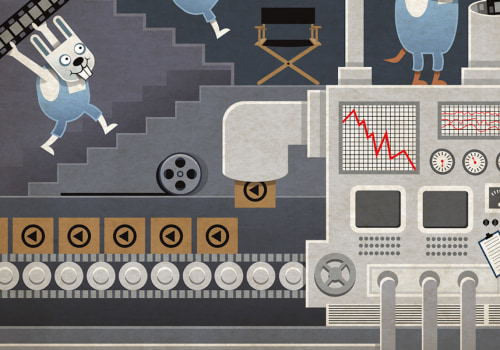Video production is a complex process that requires careful planning and execution. It involves a series of steps, from ideation and strategy to pre-production, production, and post-production. Each stage has its own set of tasks that must be completed in order to create a successful video. In this article, we'll discuss the different stages of video production and how they work together to create a high-quality video.The first step in the video production process is ideation and strategy.
This is where you identify the purpose of the video, the target audience, and the key messages you want to convey. You'll also need to decide on the type of video you want to create, such as a live-action video or an animated video. Once you have these details figured out, you can move on to the next stage: pre-production.Pre-production is a less abstract and more specific form of planning than the ideation, strategy and development phase. This is where a storyboard will be made to describe each individual scene, including the writing of the script.
Pre-production planning should include all the assets that production needs from top to bottom. This includes equipment rental, talent, and quotations for all items that will need to be rented or purchased.The more detailed the planning, the less likely it is that the shoot will exceed budget or miss deadlines. During pre-production, the shooting schedule will have been planned in the most efficient way. This shooting schedule will be followed as best as possible by the crew.
At each shoot, the production team will install the equipment, complete the shoot and then disassemble it, and any problems that arise on set, such as a malfunction of the equipment, will have to be resolved on the fly.Due to time pressure, everyone on set will have a specific job and will be responsible for completing it as scheduled. The stages of video production don't just consist of coming up with an idea, taking out a camera and shooting, but it's a detailed process, and its three stages contain numerous steps of their own. That's why we call it “video production” rather than simply filming or videography.The stages of video production show that planning and preparation are the most important part of creating a marketing video, since they determine the success of both filming and editing. After all, 62 percent of people are more likely to think negatively about a brand if that brand published a poor quality video experience.Now that you have all the resources to create your video, what's next in the video production stages? You guessed it: it's time for production! Make sure you have all the right video production equipment and that you bring loaded spare parts just in case.
The equipment will be one of the things detailed in your production program.In the video production stages, post-production begins after filming is over and editing of material begins. Post-production usually includes editing images, editing sound, adding music, visual effects, words and graphics, and creating several shorter videos such as a trailer or version for social networks. We recommend using the latest editing software to get the most out of post-production.Once again, a good video producer will already have this latest software and will be an expert in how to use it (and use it to its fullest). The editing process is very collaborative and if you're going to create a video for a client it's likely to involve a lot of back and forth with them to receive feedback and give their approval.This point in the video production stages requires a lot of trust between customer and production.
While stages of video production are divided into these three it's important to remember each stage has its own set of tasks that must be completed in order for your project to be successful. Pre-production planning is essential for creating high-quality videos that meet your objectives; it involves identifying your objectives and your audience; developing an initial concept; practically planning budgeting; setting up equipment; casting talent; finding locations; creating storyboards; writing scripts; adding special effects; adding music; adding subtitles; creating shorter versions for social media; editing images; editing sound; adding visual effects; words; graphics; executing your purpose (marketing tool/social media/pleasure); collaborating with clients for feedback; trusting your team; using latest software; using best practices; understanding budgeting; using professional help (video production company); understanding importance of quality videos; creating best video marketing strategy.In short, video production is an intricate process that requires careful planning from start to finish. It involves numerous steps from ideation through post-production that must be completed in order for your project to be successful. By understanding each stage of video production and following best practices throughout each step you can create high-quality videos that meet your objectives.










